A transverse sinusoidal wave moves along a string in the positive x-direction at a speed of 10m/s. The wavelength of the wave is 0.5m and its amplitude is 10cm. At a particular time t, the snap-shot of the wave is shown in figure. The velocity of point P when its displacement is 5cm is -
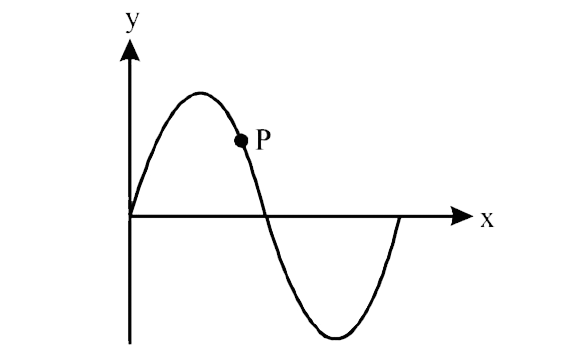
√3π50ˆjm/s
−√3π50ˆjm/s
√3π50ˆim/s
−√3π50ˆim/s
The correct Answer is:A
Particle velocity, vp=−v (slope of y - x graph)
Here, v=+ve, as the wave is travelling in positive direction.
Slope at P is negative.
Therefore, velocity of particle is in negative y (or ˆj) direction.
Topper's Solved these Questions
- ARCHIVES 2 VOLUME 6BOOK - CENGAGE PHYSICSCHAPTER - ARCHIVES 2 VOLUME 6EXERCISE - Multiple Correct
22 Videos
- ARCHIVES 2 VOLUME 6BOOK - CENGAGE PHYSICSCHAPTER - ARCHIVES 2 VOLUME 6EXERCISE - Comprehension
12 Videos
- ARCHIVES 2 VOLUME 6BOOK - CENGAGE PHYSICSCHAPTER - ARCHIVES 2 VOLUME 6EXERCISE - True/False
4 Videos
- ARCHIVES 1 VOLUME 6BOOK - CENGAGE PHYSICSCHAPTER - ARCHIVES 1 VOLUME 6EXERCISE - Integer
4 Videos
- BASIC MATHEMATICSBOOK - CENGAGE PHYSICSCHAPTER - BASIC MATHEMATICSEXERCISE - Exercise 2.6
20 Videos
Similar Questions
A transverse sinusoidal wave moves along a string in the positive x-direction at a speed of 10 cm/s. The wavelength of the wave is 0.5 m and its ampli- tude is 10 cm. At a particular time t, the snap-shot of the wave is shown in figure. The velocity of point P when its displacement is 5 cm is Figure :
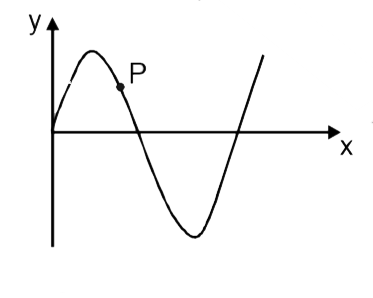
View SolutionFor the wave shown in the figure, the frequency and wavelength if its speed is 320 m/s are
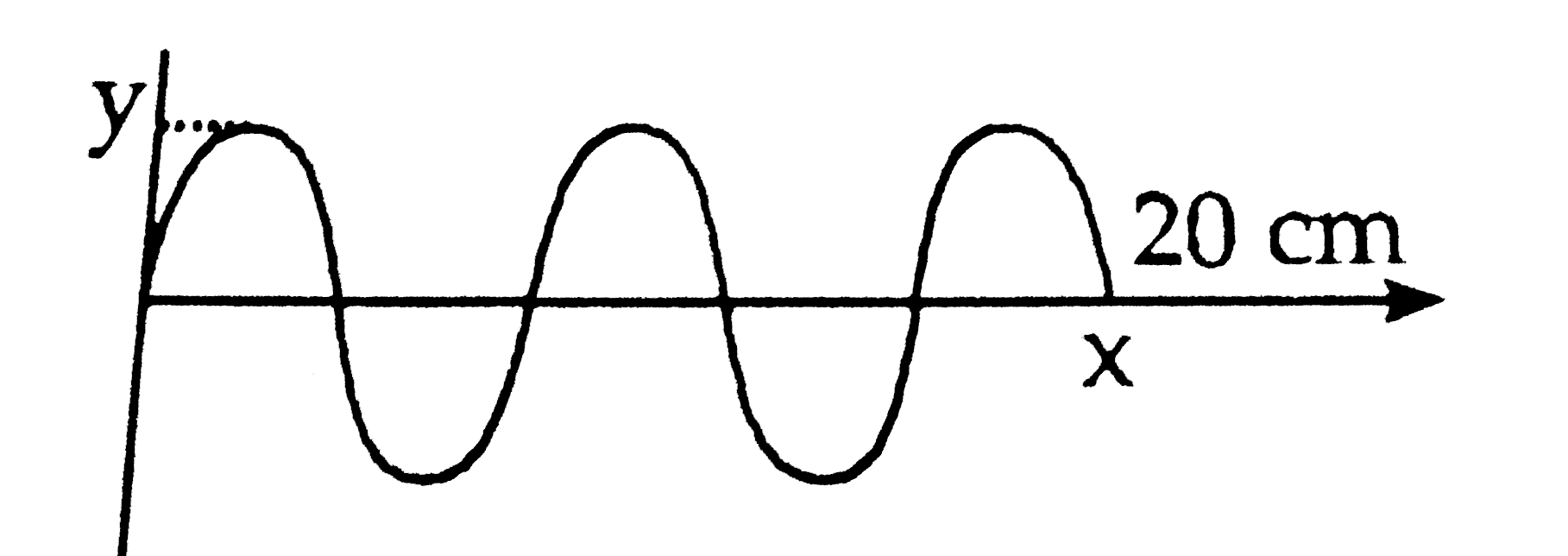
View Solution
Knowledge Check
A transverse sinusoidal wave moves along a string in the positive x-direction at a speed of 10cm/s. The wavelength of ythe wave is 0.5m and its amplitude is 10cm. At a particular time t, the snap-shot of the wave is shown in figure. The velocity of point P when its displacement is 5cm is -
 A(a) √350ˆJm/sB(b) −√350ˆJm/sC( c ) √350ˆim/sD(d) −√350ˆim/s
A(a) √350ˆJm/sB(b) −√350ˆJm/sC( c ) √350ˆim/sD(d) −√350ˆim/sA certain transverse sinusoidal wave of wavelength 20 cm is moving in the positive x direction. The transverse velocity of the particle at x=0 as a function of time is shown. The amplitude of the motion is:
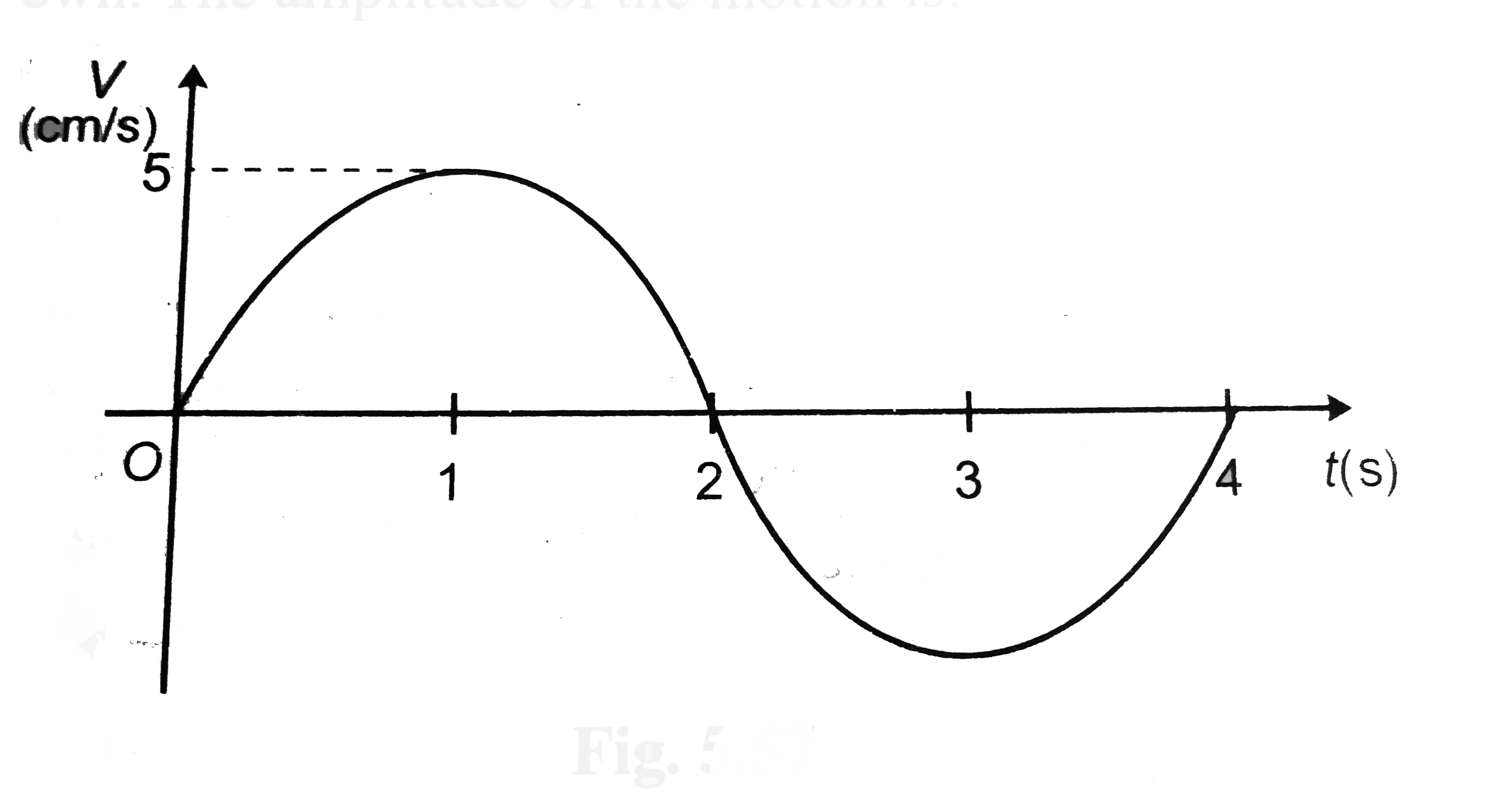 A5πcmBπ2cmC10πcmD2πcm
A5πcmBπ2cmC10πcmD2πcmA transverse sinusoidal wave of wavelength 20 cm is moving along a string towards increasing x. the transverse displacement of the string particle at x=0 as a function of time is shown in figure.
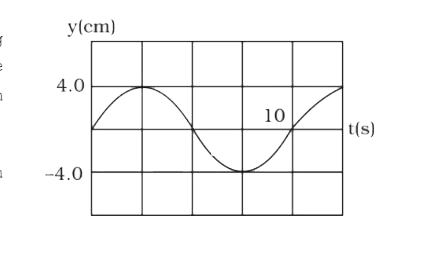
Q. The transverse velocity of the particle at x=0 at t=5.0 s is ?A−2cm/sB+2cm/sC+1.5cm/sD−2.5cm/s
A transverse sinusoidal wave is moving along a string in the opposite direction of an x axis with a speed of 70m/s. At t=0 the string particle at x=0 has a transverse displacement of 4.0 cm and is not moving. The maximum transverse speed of the string particle at x=0 is 16m/s. (a) What is the frequency of the wave? (b) What is the wavelength of the wave? If y(x,t) =ymsin(kx±ωt+ϕ) is the form of the wave equation, what are (c) ym,(d)k,(e)ω(f)ϕ, and (g) the correct of sign in front of ω?
View SolutionA wave travels along the positive x-direction with a speed of 20ms−1. The amplitude of the wave is 0.20 cm and the wavelength 2.0 cm. (a) Write a suitable wave equation which describes this wave. (b) What is the displacement and velocity of the particle at x = 2.0 cm at time t = 0 according to the wave equation written ? Can you get different values of this quantity if the wave equation is written in a different fashion ?
View SolutionShows a snapshot of a sinusoidal travelling wave taken at t=0.3s. The wavelength is 7.5 cm and amplitude is 2 cm. if the crest P was at x=0 at t=0, write the equation of travelling wave.
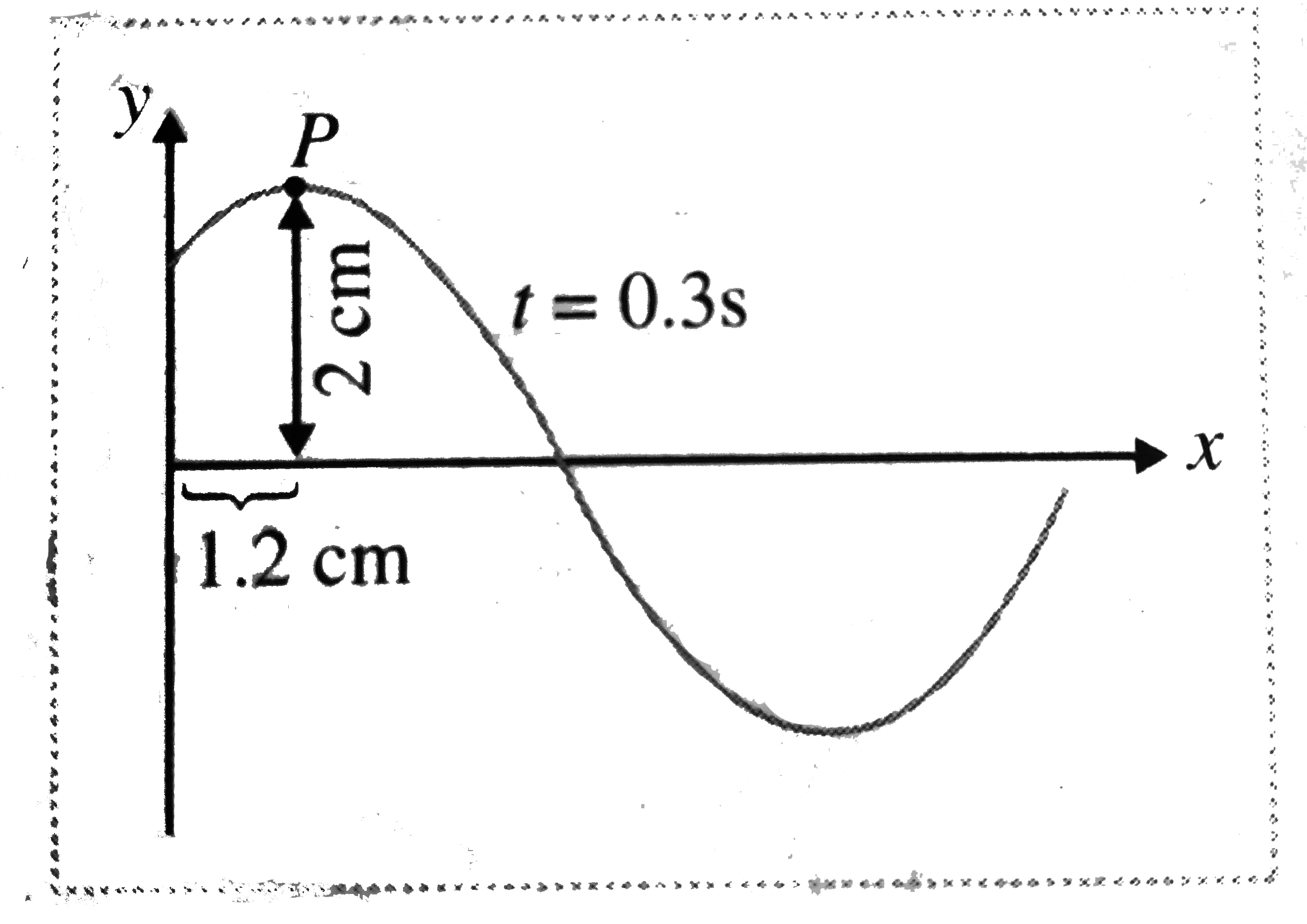
View SolutionA certain transvers sinusoidal wave of wavelength 20cm is moving in the positive X direction. The transverse velocitt of the particle at x=0 as a function of time is shonwn. The amplitude of the motion is equal to xπ (in cm). Find x :
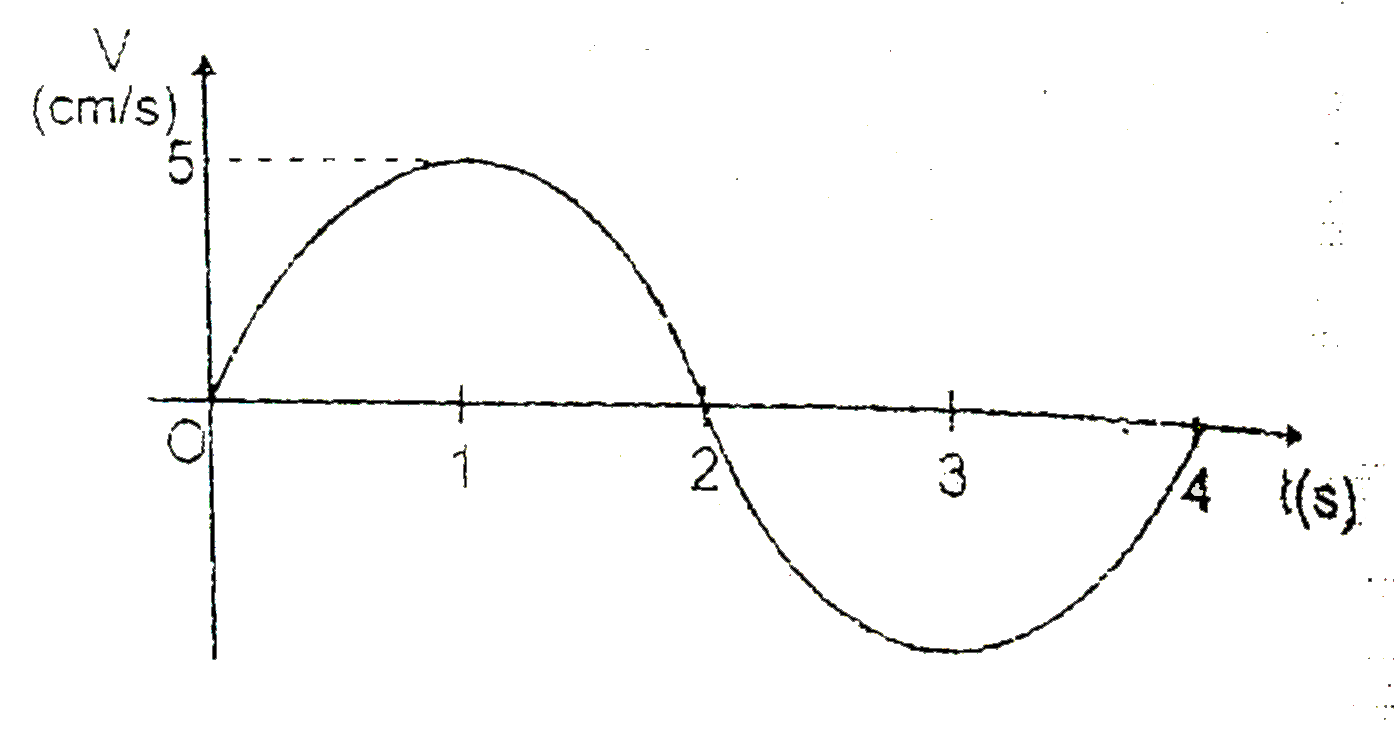
View SolutionA transverse sinusoidal wave of wavelength 20 cm is moving along a string towards increasing x. the transverse displacement of the string particle at x=0 as a function of time is shown in figure.
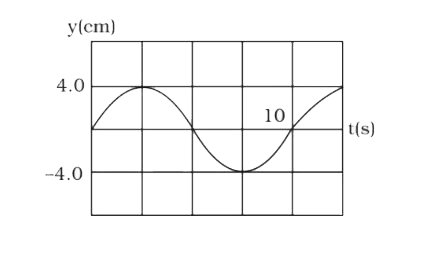
Q. The velocity of propagation of the wave is ?
View Solution
